
Baobabs, lemurs, spiny forests, chameleons and hundreds of orchids: Madagascar is truly a spectacular kaleidoscope of nature. The island's long isolation from neighboring continents allows native wildlife to evolve in relative isolation. With approximately 95 percent of Madagascar's reptiles, 89 percent of its plants, and 92 percent of its mammals found nowhere else on Earth, Madagascar is a well-known distinct biodiversity hot spot that has significant importance to the global ecology.
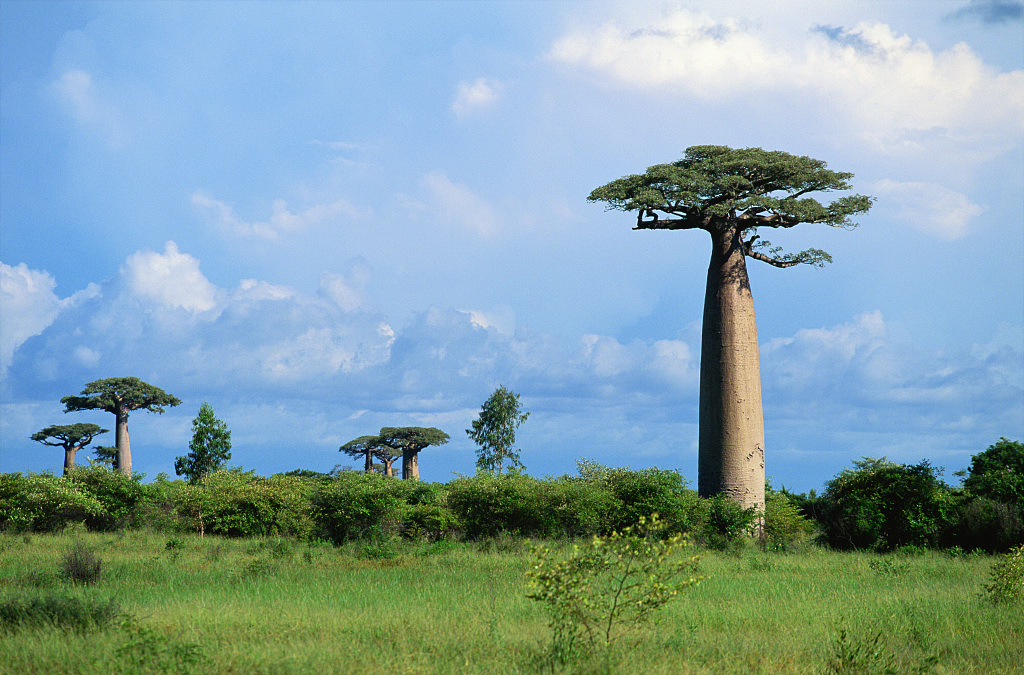
Picturesque Madagascar. /VCG Photo
A dizzying range of plants grows on the island nation. The country, located off the east coast of Africa, has extensive mangrove areas. It also has nearly 1,000 known species of orchids, of which 85 percent are indigenous. Many native plants are used as herbal remedies. One such plant is the periwinkle, which has been used to treat Hodgkin's lymphoma and leukemia.
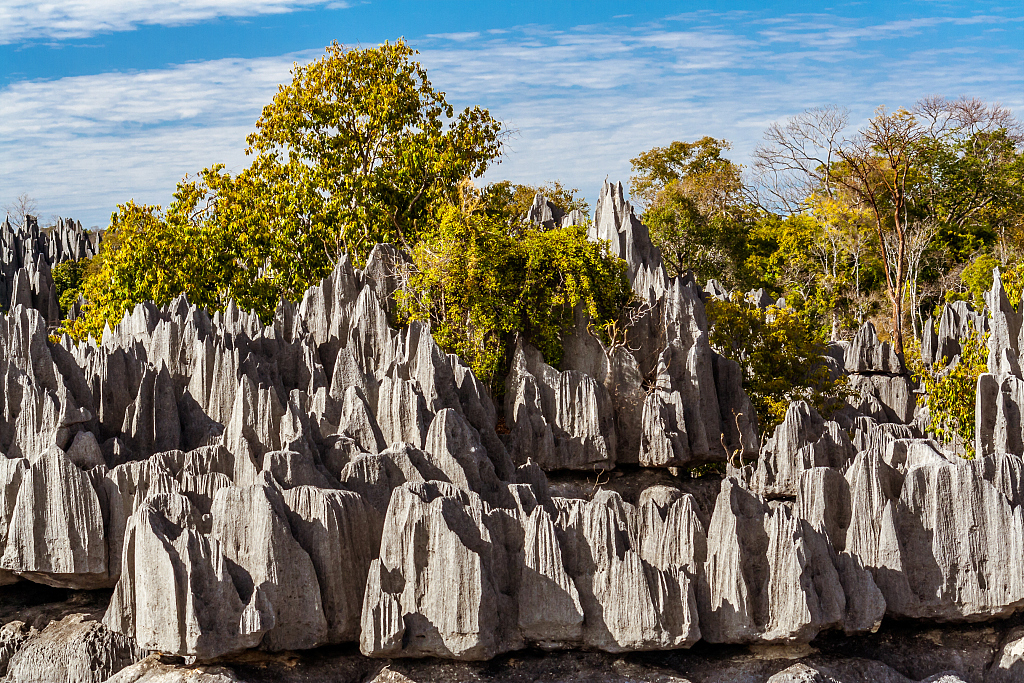
Madagascar's Tsingy de Bemaraha National Park is a UNESCO World Heritage Site. /VCG Photo
However, with the growing human population and demand for economic development, Madagascar's diverse flora and fauna are severely endangered. Deforestation is jeopardizing the country's habitats where many species live. Agricultural fires, soil erosion, illegal wildlife trade and the introduction of alien species are Madagascar's major environmental problems that need to be addressed.
In this article, we look at some of Madagascar's native plants that will make you marvel at the wonders of nature.
Baobab
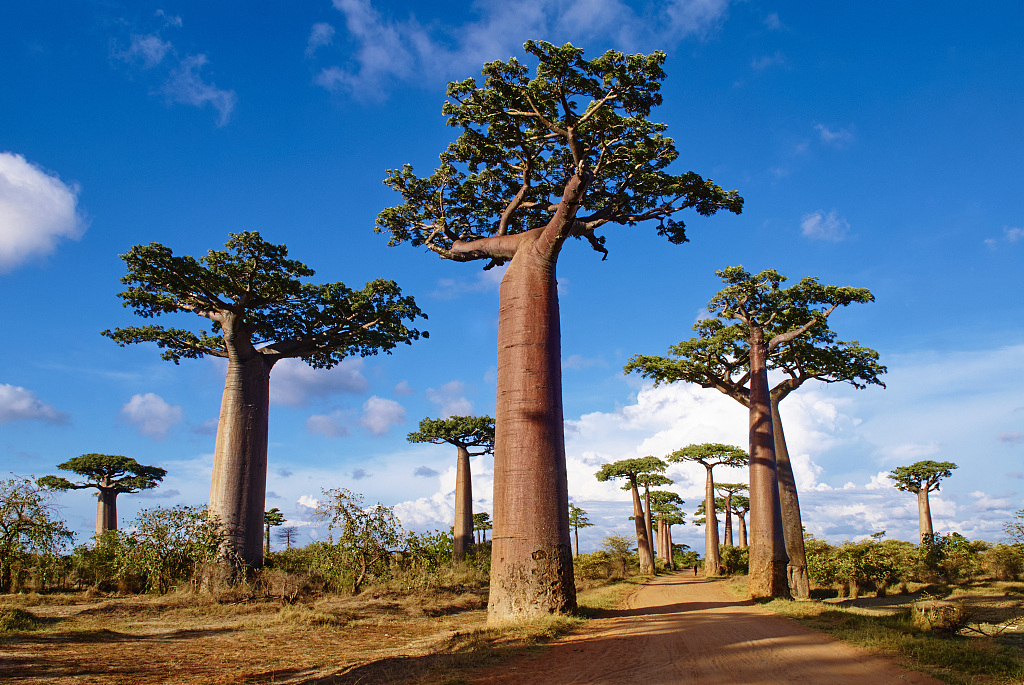
Baobab trees. /VCG Photo
Seven out of the nine species of the baobab tree are found in Madagascar, and six species are native to the island. The trees are important components of the Madagascar dry deciduous forests in the western and northern part of the country.
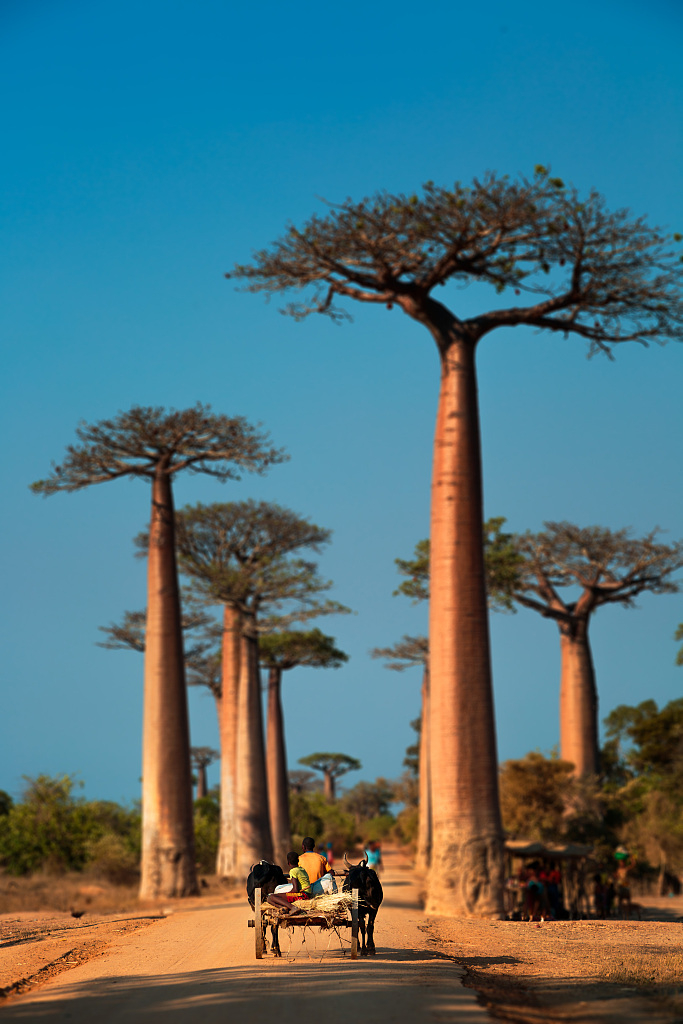
Seven out of the nine species of the baobab tree are found in Madagascar. /VCG Photo
Grandidier's baobab is the most famous of Madagascar's indigenous species of baobabs. The magnificent tree, which is locally known as the renala, is only found in the western part of the country. It has a huge trunk that can store water. The flowers, which are said to smell of sour watermelon, are pollinated by nocturnal mammals, such as bats and fork-marked lemurs. The fruit is rich in vitamin C and can be eaten fresh.
The encroachment of agricultural land threatens the unusual tree. It's classified as endangered on the International Union for Conservation of Nature (IUCN) Red List.
Ravenala
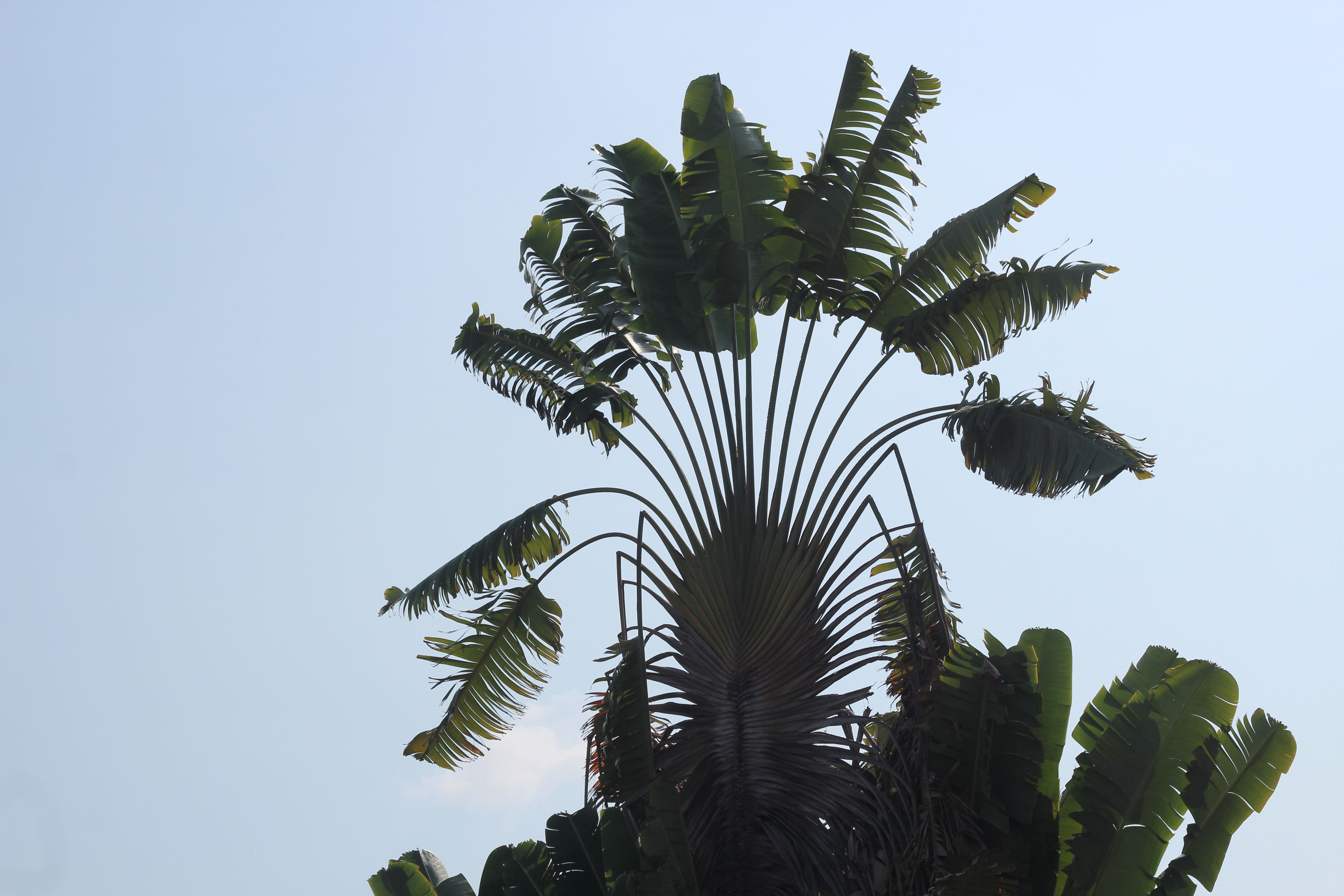
The ravenala plant is a horticultural celebrity cultivated in many botanical gardens. /VCG Photo
The distinctive fan-shaped plant is a genus of flowering plants from Madagascar. The leaves are enormous and paddle-shaped. The flowers are large and white with a green bract. More amazingly, it produces seeds covered in blue arils, which is very rare in nature. As the plant grows older, the old leaves will fall off and reveal a grey trunk.
Thanks to its unique and beautiful appearance, ravenala has become a horticultural celebrity that can be found in many botanical gardens around the world.
Octopus trees
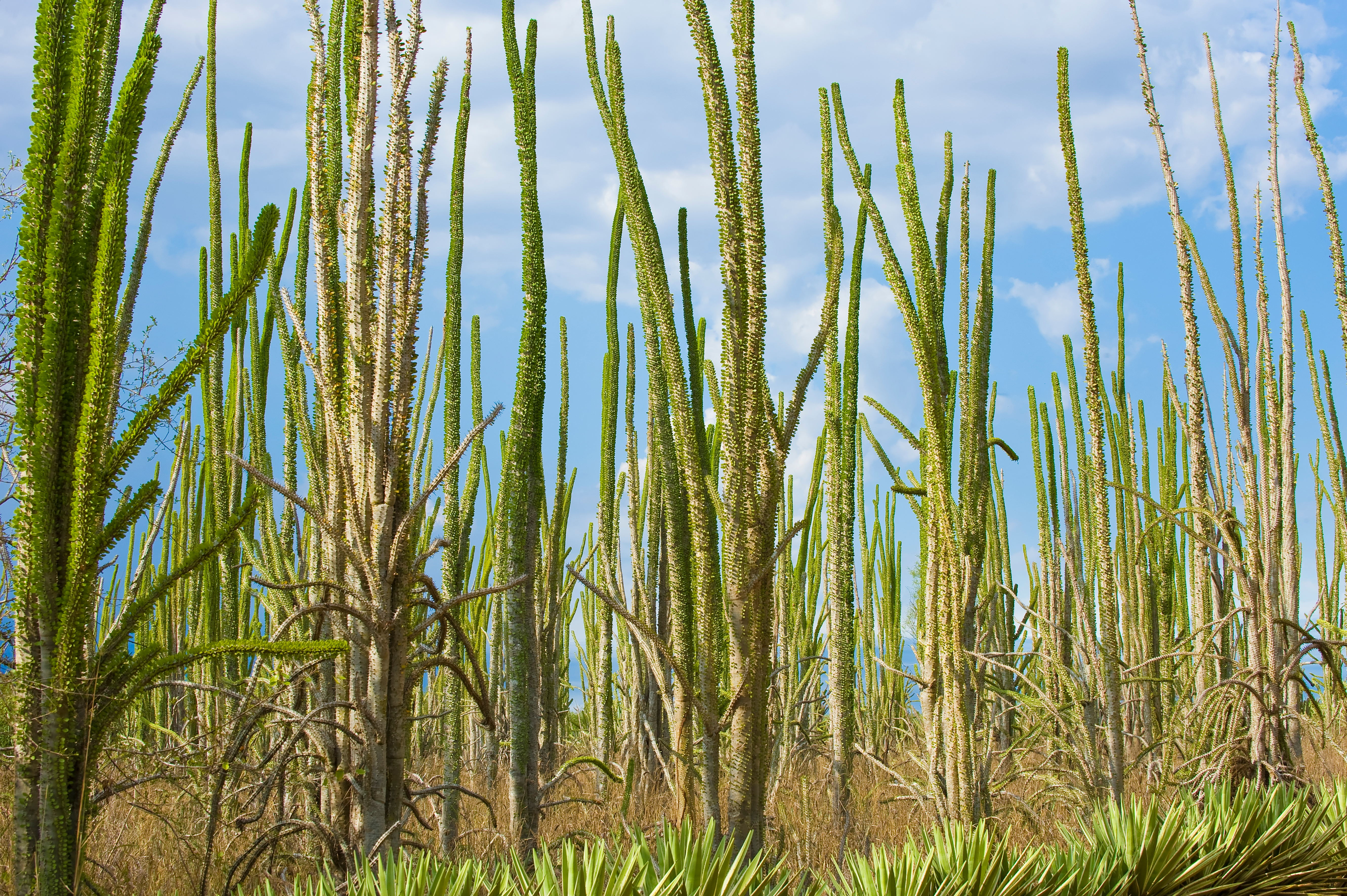
Octopus trees. /VCG Photo
Scientifically known as Didierea madagascariensis, the plant is native to the arid southwest of Madagascar. It is a spiny tree that can grow up to between 4 to 6 meters. They are drought-resistant and can thrive in desert conditions.
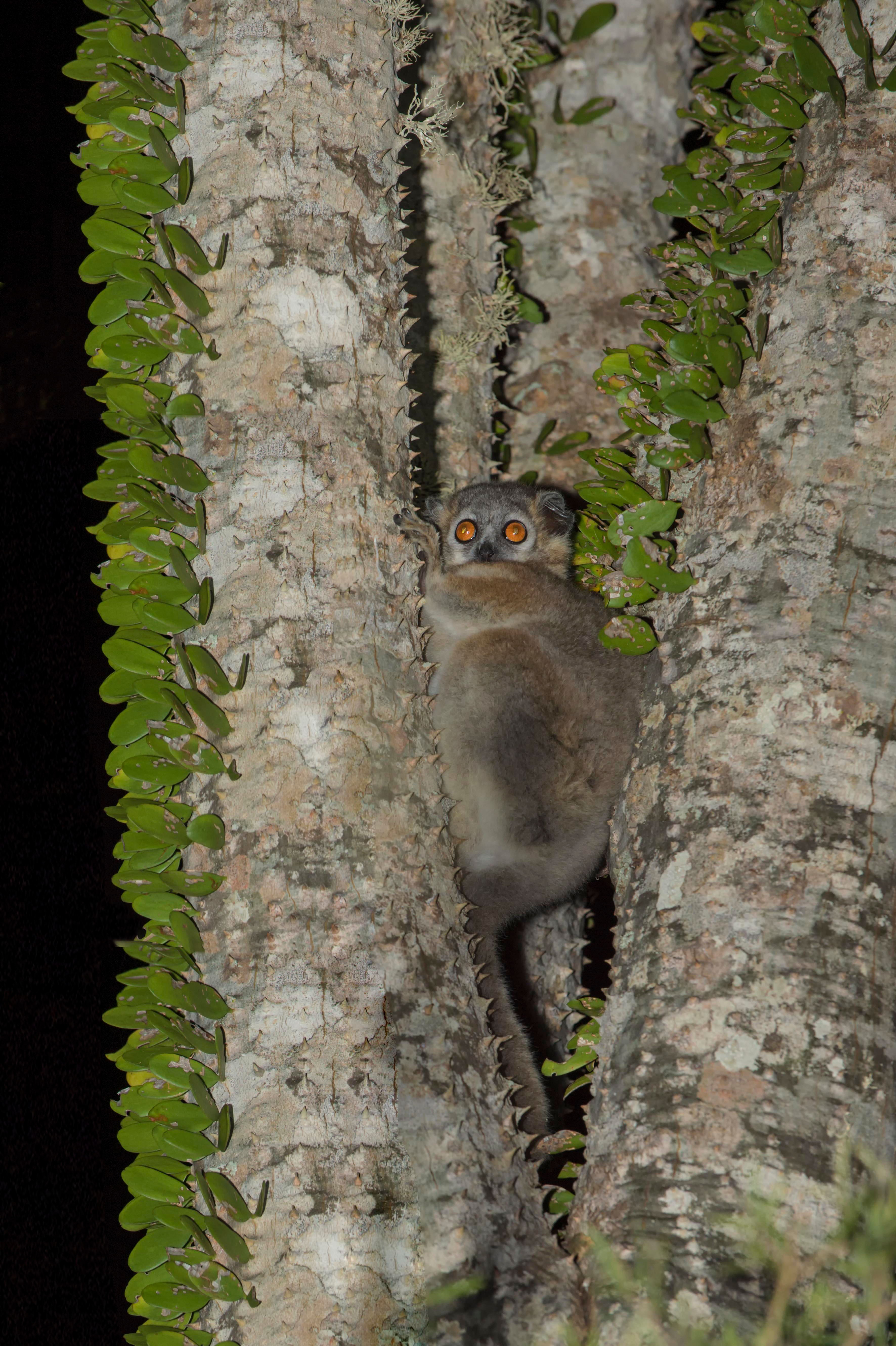
A Reddish-gray Mouse Lemur (Microcebus griseorufus) in an octopus tree in Toliara Province, Madagascar. /VCG Photo
The spiny dry forest where octopus trees grow is an outstanding ecoregion in Madagascar. The majority of the flora in the spiny forest is endemic, making it a priority for conservation. The main threats to the local ecology include logging for construction and harvesting for firewood.
Poinciana
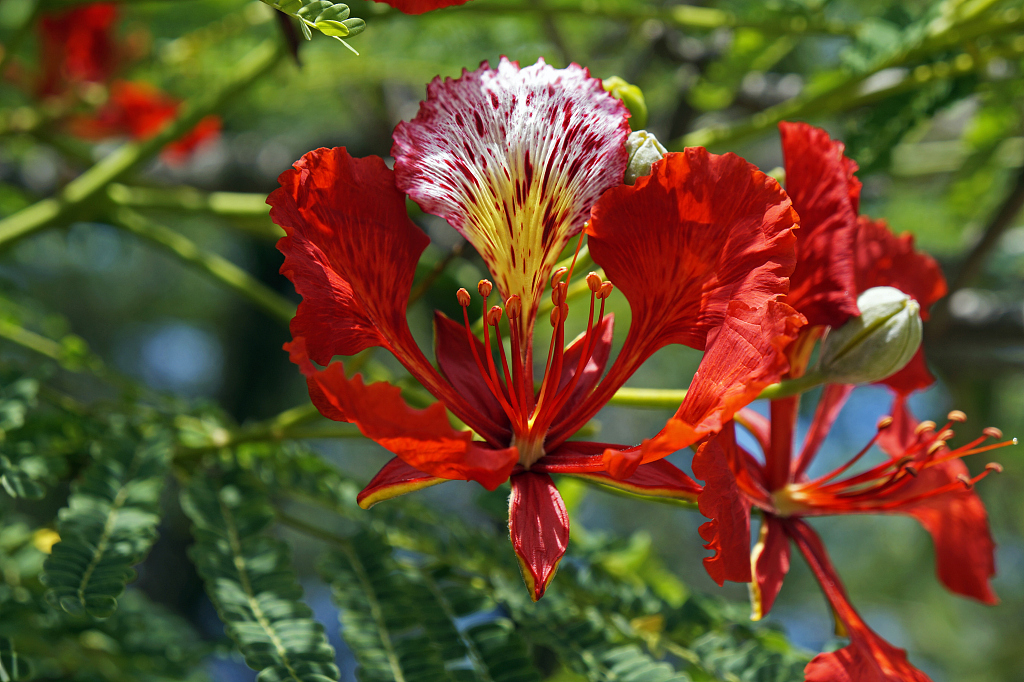
Poinciana. /VCG Photo
The beautiful flowering plant, famous for its fern-like leaves and red flame-like flowers, is native to Madagascar. The plant is also called flame of the forest, thanks to its brilliant display of large, scarlet flowers in summer.
The plant has been introduced to many tropical and subtropical parts of the world for its ornamental value. It's also used as a shade tree because of its spreading growth habit. It can grow up to around 10 meters and spread widely with dense foliage.
About 'Plants & Nations'
Plants & Nations is a series of articles and pictures about common plants in the world. It serves as a guide to beautiful plants from different countries.
(Top image via VCG)
(If you want to contribute and have specific expertise, please contact us at nature@cgtn.com.)

Copyright © 2018 CGTN. Beijing ICP prepared NO.16065310-3
Copyright © 2018 CGTN. Beijing ICP prepared NO.16065310-3